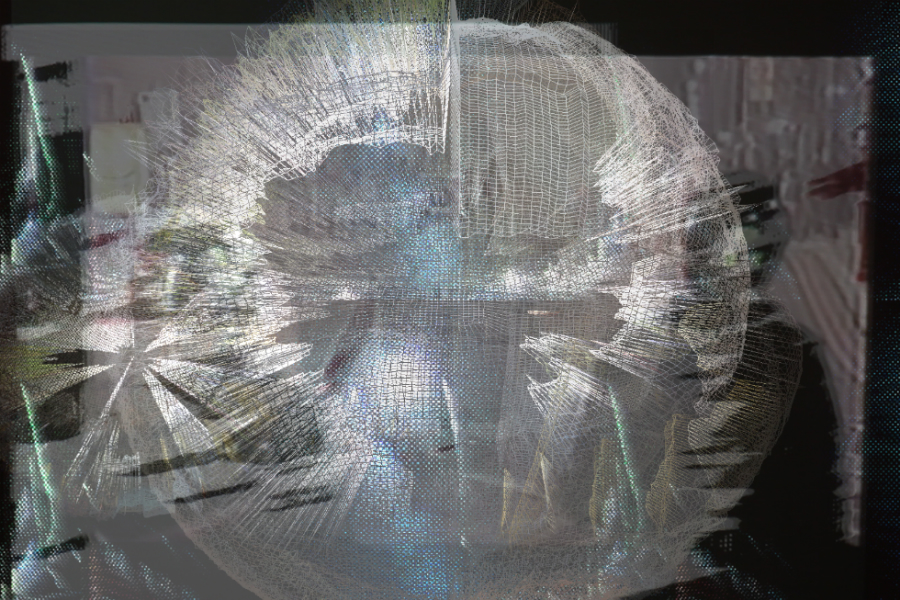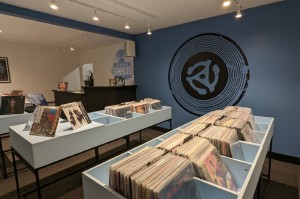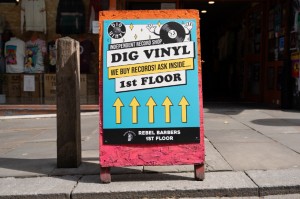Laptops Vs Guitars: Towards A New Performance Aesthetic

How do electronic musicians navigate the tricky sphere of live performance? David Tate talks exclusively to artist Kepla about ‘boring’ laptop shows, utilising technology, and winning over sceptical audiences…
In spite of its growing ubiquity, there still remains a perceptual dissociation between traditional and electronic music, especially in a live setting. People still seem unconvinced on the legitimacy of electronic music as a performative art.
Images of multimillion pound selling artists like Disclosure and David Guetta playing with unplugged decks do little to endorse the form, while the use of a laptop as an instrument has become an alienating experience for audience members and musicians alike. Accused of ‘checking their emails’ or playing a recording, musicians often struggle to validate their artwork in the live sphere.
In this context, how does a laptop musician present themselves to an audience, particularly to those whose primary experiences are with ‘traditional’ gigs? Ahead of the launch of his new project, electronic artist Kepla (Jon Davies) discusses the issues of audience expectation, the possibilities of electronic music and the potential for a new performance aesthetics.
Founding electronic and experimental collective Deep Hedonia in April 2012 to bring challenging, underground events to Liverpool, Jon, alongside designer and artist Thom Isom, have now put together a brand new A/V piece for this Friday’s 2.2 edition of Syndrome.
“We’re working with this thing as a completely new project. In the two years that we’ve been together (as Deep Hedonia), this is the first thing we’ve done together creatively. It’s interesting how this has finally come about.”
Blackberry Broadcast, inspired by the London Riots in 2011, uses a unique blend of sounds and visuals to explore the growing racial and class tension in inner city areas. The laptop is a key tool in utilising technology to create an immersive experience. How, though, does this approach alter people’s responses to performance?
“People who are used to going to rock gigs may find it difficult to approach a laptop performance because you’re removing one of the main sensory experiences of live music”, responds Jon. “You don’t really have this audience/performer interaction. There’s a reciprocation at rock shows and I think people expect that of every gig; but I’ve been watching gigs for 12 years and I’m getting a bit bored. The more you watch them, the more you notice the forms of these experiences. I want something new.”
The new, as has often been the case, is not always easy to swallow for some. By experimenting with the form of their live show, The Knife angered many of their fans on tour last year. Taking to the stage in robes, stood behind arcane instruments, the show began with The Knife most of the audience were expecting to see; dark, mysterious and gothic. Three songs in, however, they had abandoned their instruments, alongside the pretence that they were playing them. De-robing to reveal bright jumpsuits, they spend the remainder of the gig in a carefully choreographed dance routine. The show was derided by some, lamenting the use of playback and lack of live instrumentation.
“That’s great,” says Jon. “For me that’s not even a bold move. It’s a smart move. There’s always a performative compromise you have make when you’re trying to make really complicated music, but it doesn’t make sense to just retrofit it to guitars or whatever.”
Does such a response by the fans, however, suggest that this type of performance will never be wildly popular, and if so, what can electronic artists do about it?
“Maybe it’s just my opinion, but it really rests more on the audience. I don’t think someone should have to cater for audiences’ insecurities or expectations and compromise all the effort he’s put into making this music.
“Maybe that will always be the barrier for laptop musicians. They’ll never become as popular as stadium rock acts because they can’t put on a show while playing.”
For some, the perceived ease with which laptop musicians play their music can undermine the performance. Traditionally, by understanding their ability to transcend an instrument’s limitations, subvert its significance or reinvent its capabilities, we develop an understanding of the player, and some subjective notion of how ‘good’ they are. When the laptop removes these limitations, along with ideas of form, how do we judge the performer?
“Maybe the language hasn’t developed yet for people to understand the intimacy a performer has with a laptop,” suggests Jon. “There aren’t these limitations framing the idea of the good ‘performer’ or ‘performance’. Things become abstract. You could totally remove the performer from the stage and it could sound exactly the same. People don’t see the point in watching a person do this live and to an extent people are correct.
“To me though, I’m not interested in watching what people do live. I see it as a distraction. Electronic music is conducive to a kind of solitary appreciation.”
The key then is perhaps not to move towards a performance aesthetic that conforms to the ideas of a traditional rock gig — the stages, the musicians, the act — but to reshape the parameters by which we define it. If understanding electronic music does not consist of the same elements, or require the same skill set, should we be looking at it differently?
“I see laptop musicians more in the linearity of techno DJs than guitarists or bands. The beauty of going to raves or club nights… your point of focus of the show wasn’t the performer; it was yourself and the music.”
The laptop can be a powerful tool to disembody the musician from the performance, allowing the music to take on a trans-human quality. As the musician becomes increasingly detached, the music takes on its own aesthetic and identity. Removing themselves from under the spotlight, Deep Hedonia allow their music to be represented by something else: their unique visuals.
“This idea of performance doesn’t have a face. When people make this music, they’re not projecting who they are as a person; it’s the identity they want to make. I guess this is where the use of video or some other visual cue comes into live electronics (like Evian Christ). Musicians want to manifest themselves as an abstract object. The music isn’t being played by their hands, so why should the focus be on them?”
Does this mean that musicians will eventually become superfluous to live music?
“It becomes the question, ‘Are humans useful?’ It’s something you’re always dabbling with anyway when you’re making automated music. You’re putting a lot of effort in creatively, but algorithmically and technically? Not so much. In the end, it’s just another technological leap forward and it’s about how you use that.”
As with all new music, there is still some reticence by the general public to accept electronica as a legitimate form.
“People are mostly negative when they’re out of their comfort zone. I totally get it when people say they’re bored by laptop musicians, but for me it’s just a disconnect. The contrast between artists like Thee Oh Sees and Oneohtrix Point Never sums it up. Thee Oh Sees feels like some retro/nostalgic party, totally forgetting about the advancements we’ve made as artists and composers. Even as audiences.
“To pick on the fact that Oneohtrix Point Never is just one guy behind a laptop misses the point. You’re listening to an amazing sequence of musical ideas that are exclusive to that live show, and you want to be there to experience that in the way the artist chooses to present it.”
It may be difficult to dissect the parameters of live electronic performance, but it is clear we will have to keep experimenting. As the technology advances at an unprecedented rate, music and performance will become an increasingly nebulous idea, with artists having to adjust, adapt and innovate. But isn’t that what musicians — and fans — should always strive for?
“When you have a certain objective with your music, everything should be geared towards that. Primarily you should concentrate on the output of your sonic capability. There’s something confrontational about this: you don’t compromise your ideas for the sake of a performance. There’s really no confrontation left in rock.
“Screaming and getting your willy out is no longer confrontational; these are the things I saw on a BBC2 documentary on The Sex Pistols.”
David Tate
See Syndrome 2.2: Holly Herndon live with BLACKBERRY BROADCAST by Kepla and Thom Isom, Engineering Joy by the Hive Collective, and Ipman (Cold Recordings) – 8pm, Friday 5 September 2014, 24 Kitchen Street, Liverpool
£6/7 on door/ Advance tickets here
Follow @Keplacuts on Twitter
Read other articles on Syndrome: The Glitch Interview: S. J. Fowler
The Seditious Potential Of The Smile: Me_asure
Witches, Childbirth and Virus… Syndrome Sessions 0.1 Reviewed





